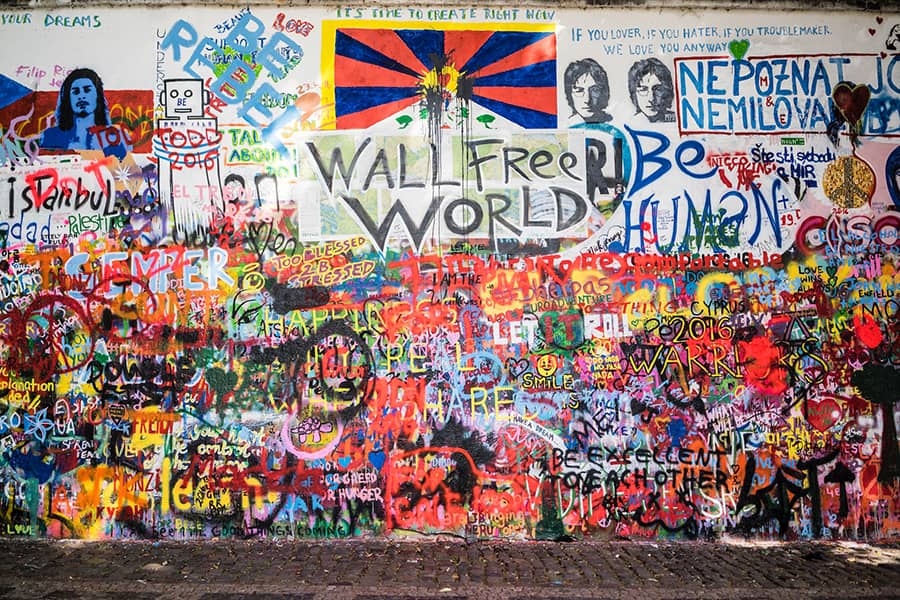The Evolution of Street Art: A Journey Through its Origins and Impact on Modern Culture
March 10, 2023
Street art is an art form that is created in public spaces and is often unsanctioned. It is a form of visual art that has evolved over time and has had a significant impact on modern culture. Street art is known for its bold, provocative, and often politically charged messages, and it has the power to challenge and change societal norms. This article will take a deep dive into the evolution of street art, its origins, and its impact on modern culture.
Origins of Street Art
The origins of street art can be traced back to the 1960s and 1970s in the United States. During this time, graffiti was used as a form of political expression by African American and Hispanic communities in urban areas. Graffiti was a way to claim and mark territory, communicate messages to others, and resist oppression. This form of graffiti was often referred to as “tagging,” which is the practice of writing one’s name or initials on a surface.
In the 1980s, street art evolved into a more sophisticated and intricate form of graffiti. This new form of street art was characterized by elaborate lettering and imagery, and it was often influenced by hip hop culture. Street artists began to use spray paint and markers to create their works, and they started to experiment with different styles and techniques.
One of the most influential street artists of the 1980s was Keith Haring. Haring’s work was characterized by simple lines and bold colors, and he often used his art to address social and political issues. Haring’s work was seen as a form of activism, and it was widely recognized for its powerful messages and unique style.
In the 1990s, street art continued to evolve, and artists began to experiment with new forms and techniques. One of the most significant developments during this time was the emergence of stencil art. Stencil art is a form of street art that involves creating a stencil of an image or text and then using spray paint to create the final piece. Stencil art allowed artists to create more intricate and detailed works, and it became a popular technique among street artists around the world.
Another significant development in the 1990s was the rise of street art festivals and exhibitions. These events provided street artists with a platform to showcase their work and to connect with other artists and audiences. One of the most famous street art festivals is the “Meeting of Styles,” which takes place in cities around the world and brings together street artists from different countries and cultures.
Impact on Modern Culture
Street art has had a significant impact on modern culture, as it has the power to challenge and change societal norms. Street art is often used to express political and social messages, and it is a way for artists to voice their opinions and raise awareness about important issues.
One of the most famous street artists is Banksy. Banksy is a pseudonymous England-based street artist, political activist, and film director. His satirical street art and subversive epigrams combine dark humor with graffiti executed in a distinctive stenciling technique. Banksy’s work often critiques social and political issues, and it has been featured on streets, walls, and bridges of cities throughout the world.
Another influential street artist is Shepard Fairey, who is known for his iconic “Obey” campaign and the “Hope” poster he created for Barack Obama’s presidential campaign in 2008. Fairey’s work has been exhibited in galleries and museums around the world, and he is widely regarded as one of the most important street artists of our time.
Street art has also influenced fashion, music, and other forms of art. Many fashion designers have incorporated street art motifs into their collections, and musicians have used street art as inspiration for their album covers and music videos.
Street art has also had an impact on the art world more broadly. Many street artists have crossed over into the mainstream art world, exhibiting their works in galleries and museums. This crossover has been controversial, with some arguing that street art loses its authenticity and power when it is displayed in a traditional art setting.
One of the most notable examples of a street artist crossing over into the mainstream art world is Jean-Michel Basquiat. Basquiat began as a graffiti artist in New York City in the 1970s before transitioning to painting and becoming one of the most influential artists of his generation. Basquiat’s work was characterized by its raw energy, bold colors, and powerful messages about race, power, and identity.
The impact of street art on modern culture extends beyond the art world. Street art has been used as a tool for urban regeneration, with cities around the world commissioning street artists to create murals and public artworks that beautify and enliven urban spaces. Street art has also been used to promote tourism, with cities like Berlin, London, and New York City becoming popular destinations for street art enthusiasts.
Challenges and Controversies
Despite its widespread popularity and cultural significance, street art continues to face challenges and controversies. Street art is often seen as vandalism, and many cities have laws and regulations that prohibit or restrict the creation of street art.
Some argue that street art is a form of gentrification, as it can be used to attract wealthy residents and businesses to urban areas. Others argue that street art is a form of cultural appropriation, as artists from privileged backgrounds appropriate the cultural expressions of marginalized communities.
Additionally, street art can be controversial because of its subject matter. Some street artists address sensitive issues such as politics, religion, and sexuality, which can be offensive or controversial to some viewers.
Conclusion
Street art has come a long way since its origins as a form of political expression in the 1960s and 1970s. Today, street art is a vibrant and diverse art form that has had a significant impact on modern culture. Street art continues to challenge and change societal norms, and it has the power to inspire and provoke audiences around the world.
Despite its challenges and controversies, street art remains a vital and important form of artistic expression. It is a reflection of our society and our times, and it continues to evolve and adapt to new technologies and cultural trends. As street art continues to grow in popularity and cultural significance, it will undoubtedly continue to shape and influence the world around us.
See also: 10 Must-See Movies of the Year: A Review of the Best Films in Entertainment
Recent Posts
How to Buy a Home After 60 (Step-by-Step Guide)
July 14, 2025
Top 10 Mobility Aids Covered by Medicare
July 14, 2025
How Much Should You Save for Retirement After 50?
July 11, 2025
Best Personal Loans for Seniors with Fixed Income
July 10, 2025
SUBSCRIBE TO OUR NEWSLETTERS
Subscribe our newsletter for latest news, questions. Let's stay updated!






